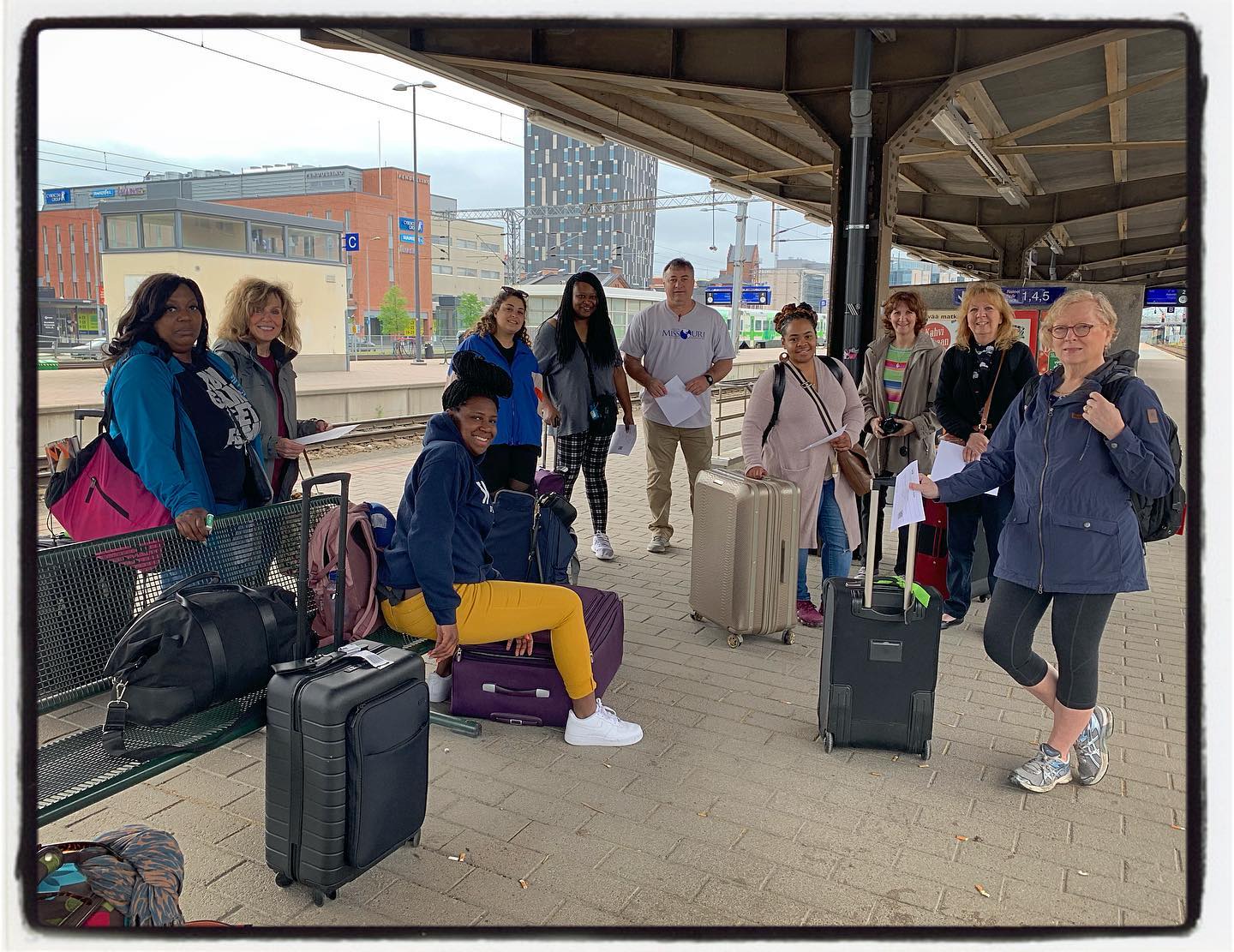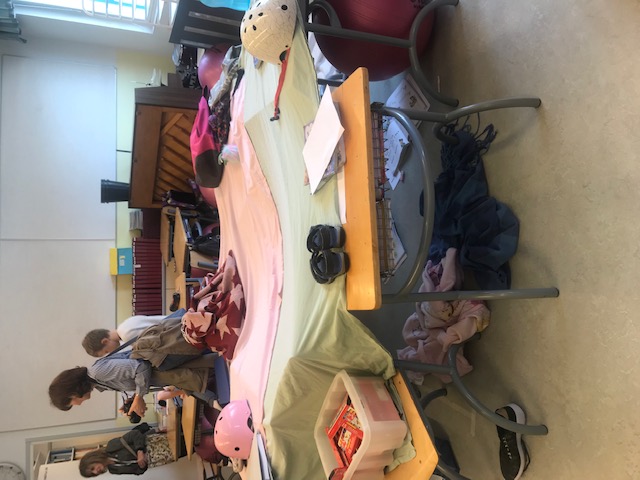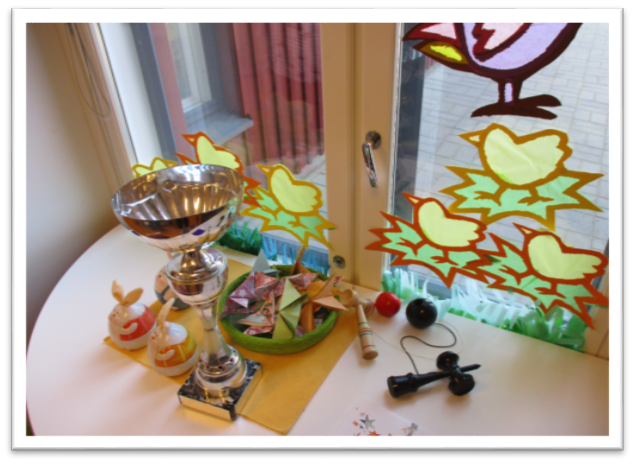In May 2019, the Inner Asian and Uralic National Resource Center facilitated an early childhood education study tour to Finland for faculty and students of St. Louis Community College. The Center collaborated with Learning Scoop, a company that specializes in providing insight into an educational system that is renowned for the success of its innovative approaches to teaching and learning. The tour was designed to provide cross-cultural learning opportunities and stimulate discussion as to how approaches to early childhood education might be developed and improved. Tour participants Jasmin Marshall and Carol Nixon report back on the experience and what they learned.
As Anita Desai once wrote: “Wherever you go becomes a part of you somehow.” This is certainly true of the St. Louis Community College trip to Finland in May. The culture, food, and people of Finland made quite an impression on our lives. More importantly, being educators of future early childhood professionals, we believe the trip influenced the way we teach and think about learning for students of any age. The experience will have lasting effects on our teaching, thinking, and advocacy for changes related to our education system. Our study tour trip to Finland was a fascinating learning experience that stimulated enthusiasm, discovery, and connection.
Enthusiasm
Excitement permeated our workspace the minute we heard we were going to be part of the group to tour Finland. Emails were fired off in all directions: How far away is Finland? What is the weather like? What kind of clothes do we need to bring? How many suitcases can we bring? What kind of food do they serve in Finland? Are we going to be seeing a forest school? These were all questions at the top of our list. Though some of us were anxious because we had never been out of the country, we were all ecstatic at the thought of visiting in person schools we had only heard of and read about in articles.

Once in Finland, everything that we saw and talked about sparked enthusiasm. For example, we saw how the children have their own symbols, which is a great way to give them a sense of identity and belonging. This was an idea we could take back with us and utilize in preschool classrooms. The older children are able to take their shoes off, lay under tables with peers, and collaborate or play games when learning a concept, which is a remarkable way to support a safe and comfortable environment for learning.

What excited us the most was the passion exhibited by all the teachers we met. Plus, the early childhood teachers at the Kurikankulma Daycare Center were the epitome of hospitality. These teachers not only value early childhood education but also love the great outdoors. They answered questions that we presented and allowed us to take part in the learning experiences they provided for their children. They shared literature about the dynamics of their program and explained how children in their program experience inclusive-based services. This is where we found some similarities to our program in St. Louis. Like the teachers at the Kurikankulma Daycare Center, we also see the value in inclusive childcare settings for young children. With these crossovers being so clear we are extremely enthusiastic about continuing the conversation regarding mirroring some of the techniques we learned while in Finland.
Discovery
Not only did we discover some of the traditions in Finnish culture, but we realized that the philosophy behind the Finnish education system is much like what is considered “best practice” for early childhood education in the United States. Children are provided with stimulating environments that engage their senses, minds, and bodies. Opportunities to construct their own knowledge and explore their own curiosity are presented through intentional and meaningful learning spaces, as the one pictured below.

Learning spaces with special items set up for the children to explore
We witnessed how these spaces or displays entice children’s discovery of the world around them and foster skills such as creativity, critical thinking, collaboration, and communication. Not only are there small spaces for discovery, but because of the “pieces” of nature disseminated throughout each of the classrooms we toured in Tampere (pictured above), the action of investigating and learning is felt and encouraged throughout the whole environment. These creative ways of bringing nature into the classroom—even in a college classroom—could promote an environment for discovery.
One of our biggest discoveries was Finland's forest kindergartens. The way the children engaged with each other, built structures, examined bugs, prepared their own food over a fire, and followed through on their own interests was amazing to observe. For years we have only been able to share information on these schools with our students from articles and YouTube videos, but now we have real life experience and footage to share with the students in our community college. The opportunity to see firsthand how these children are encouraged to take risks and to witness the learning that takes place among the natural elements of an outdoor classroom is something that we will cherish for years to come.

It was exciting to see children playing within imaginary boundaries and building confidence just by moving logs. All the while, their educators gave them the respect and trust to freely explore and learn from the natural environment. Even though our philosophy encompasses outdoor play and nature as beneficial factors in promoting the whole child, the magnitude of the Forest Kindergarten approach that we witnessed has inspired us to examine the potential for developing outdoor classrooms, natural playgrounds, and natural spaces within our college campus to emulate a forest classroom.
Connection
The faculty, staff, and students of St. Louis Community College are extremely grateful to have had the opportunity to learn about Finland's culture and educational system, and we truly appreciate the hospitality we received. Wherever we went, the Finnish people welcomed us—not only into their classrooms and schools, but into their cities of Tampere and Helsinki as well.
The staff at Learning Scoop graciously answered questions and provided information about these cities, and about the Finnish culture and educational system. More specifically, conversations were geared towards Finland’s daycare programs and preschools, and what commonalities we share for best practices in fostering young children’s development and learning. Teachers at Kurikankulma Daycare Center, Kauraslampi Daycare Center, and Omenatarha Daycare Center welcomed us into their classrooms and allowed us to explore their environments, ask questions about their curriculum and teaching, and interact with the children themselves.
Finland’s locals and hotel staff were kind, helpful, and fun. How much more fun can one have than celebrating Team Finland’s gold medal at the Ice Hockey World Championships with the Finns? Especially at a time when St. Louis’s hockey team, The Blues, were in competition for The Stanley Cup (which we also won!). That is quite a connection, and one we will hold in our hearts forever.
Thank you to everyone atKurikankulma Daycare Center, Kauraslampi Daycare Center, and Omenatarha Daycare Center; to the Inner Asian and Uralic National Resource Center at Indiana University; and to Learning Scoop for a remarkable learning expedition!


